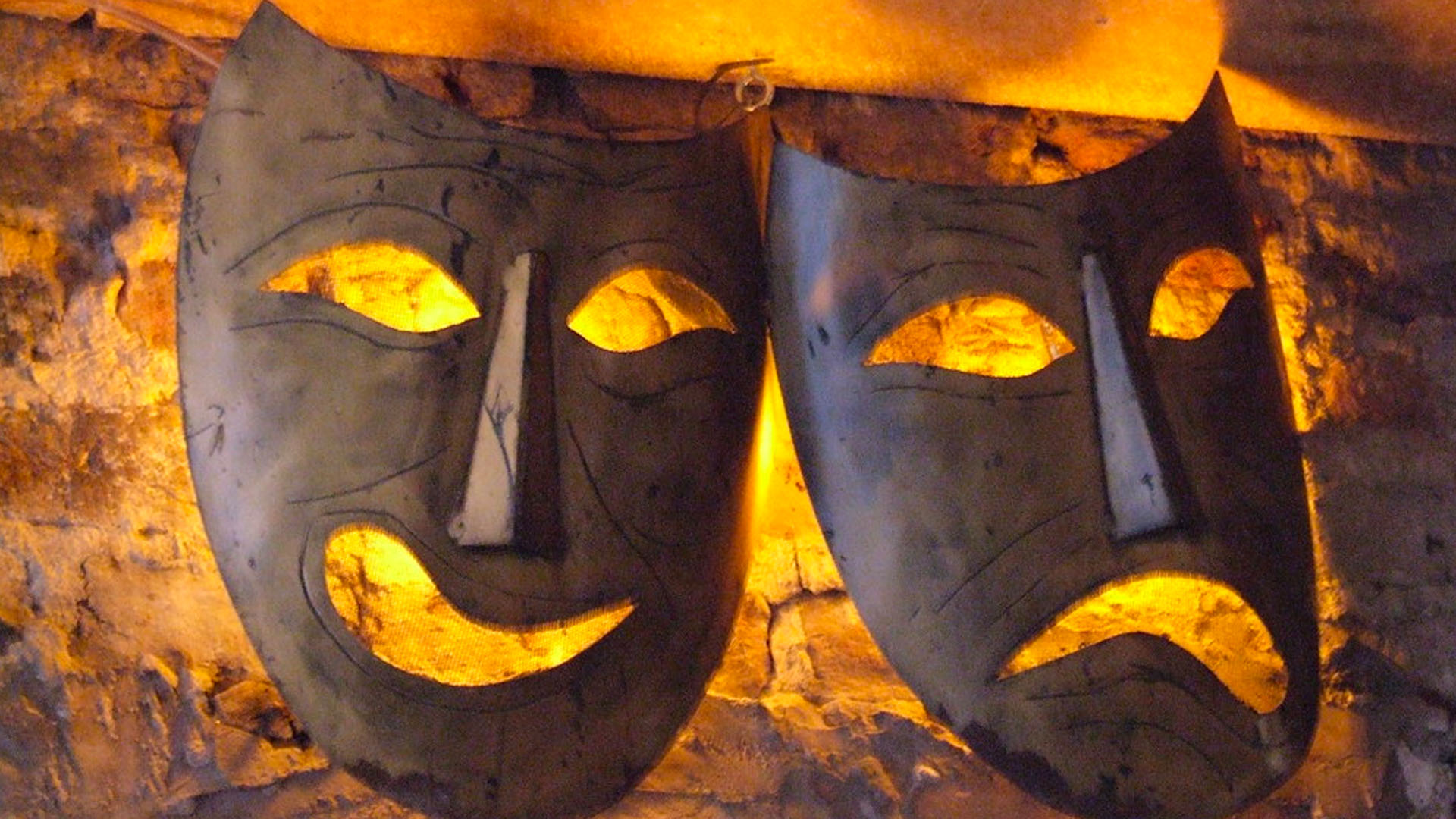[Originally published in the Star & Wave newspaper on October 25, 2023.]
By Roy Steinberg, Producing Artistic Director
Just as the green leaves of summer change into the red and yellow hues of fall, many of us in on the island have packed away our swimsuits and are busy planning what to wear to upcoming Halloween parties.
Halloween is the second largest holiday for merchants in the United States. People spent $10.6 billion for costumes and decorations last year, and are expected to top that by another $2 billion this season.
At Cape May Stage, we experience this very human need to put on costumes and assume a character different from our own. When actors don their costumes for the first time for a play, they take a great leap into truly understanding their character. I’ve heard many actors say, “I know who I am as soon as I see my costume.” While walking in another man’s shoes is a popular saying, literally wearing boots or high heels or the kathorni used in ancient Greece drastically changes one’s gait and balance.
In medieval times, Venice’s annual Carnival encouraged costumes and masks that allowed high society to behave outside of the strict norms of the day, and put people of different social status on equal footing.
More recently, the U.S. Senate experienced a wardrobe malfunction of sorts, only to reinstate a more formal dress policy. A public outcry arose after a decision was made that allowed senators to dress casually at work, resulting in an about-face requiring suits and ties for men and business dress for women to convey the dignity of the institution.
As we mount “A Tuna Christmas” at Cape May Stage for the holidays, I am keenly aware of the role of costumes and wigs in this production as its two artists play some 22 characters. Sometimes, the costume itself is a visual joke. Often, it conveys subtle information and provides insights into the psychology of a character.
When I directed “Othello” in New York in 1998, I noticed how often the word “web” was used as in “a web of lies.” As a result, I asked the costume designer to put webbing on the sleeves of costumes and use web designs in fabrics.
In theater, we need to repeat actions many times. We must invent recipes for blood that can easily be washed out for the next performance. We must make clothes that appear to be ripped but can easily be restored for tomorrow’s show. With fast changes, buttons are replaced by Velcro and actors must pull off boots and throw on jackets in seconds off-stage.
Costumes are an essential ingredient in storytelling. Period clothes tell us when a play takes place, and clothing’s color and fabric help define a character.
Just as you decide what to wear to an event, costume designers dictate what actors wear on stage. Most of us enjoy dressing up. Nice clothes can make you feel good. Costumes, however, can make you feel like anything you want. Now that is genuine power – if only for a night for most of us.
“A Tuna Christmas” runs from November 15 through December 30 at Cape May Stage, with performances Wednesday to Saturday nights and a Sunday matinee.
For tickets and more information, click here.



